1. Introduction
The Gerdjikov-Ivanov (GI) equation carries the quartic nonlinearity of latter equation while ’s equation is classically explored with cubic nonlinearity, the dimensionless GI-equation is
where q*(x,t) denotes the complex conjugation of the complex valued wave structure q(x,t) with x and t as spatial and temporal variables. The initial and last terms of the dimensionless GI-equation stand for the linear temporal evolution of solitons and the nonlinear dispersion, respectively. All the involved parameters: a, b, and c are real-valued constants such that a gives dispersion of group velocity and b is the coefficient of the quartic nonlinear term.
The famous full nonlinearity structure of the perturbed GI- equation is,
where a, μ and λ represent the inter-modal dispersion, the higher-order dispersion effect and the self-steepening for short pulses, respectively, while m accounts for full nonlinearity effects.
Big varieties of biological, chemical, and physical phenomena are governed by nonlinear partial differential equations (NLPDEs) which play a crucial role in nonlinear science. The analysis of such equations provides insightful physical information, useful for further applications. Many trails have been penned for the physical problems in the last years to get the analytical solutions of the NLPDEs with the recent computer technology [1-12]. A variety of powerful methods have been developed such as the exp(-ϕ(ζ))-expansion expansion method [13,14], the (G'/G)-expansion method [15,16], the new extended direct algebraic method [17,18], the first integral method [19,20], the extended Jacobi elliptic function expansion method [21,22], and so on [23-30]. Furthermore, the current analysis concentrates over one such nonlinear evolution equation, known as the GI equation [31]. A spectral problem and the associated perturbed GI hierarchy [32] of nonlinear evolution equations is presented and shown that the GI hierarchy is integrable in a Liouville sense and possesses bi-Hamiltonian structure. Numerous efficient and influential methods have been projected for obtaining solutions of GI equation, such as algebra-geometric solutions [33], soliton hierarchy [34], bifurcations and travelling wave [35], bright and dark soliton solutions [36], Darboux transformations [37] and many more being studied for more than a decade [38-48], and Kaur and Wazwaz [49] obtain the optical solitons for perturbed GI equation. In this paper we are going to apply the balanced modified extended tanh-function (METF) method as a new technique to get new exact solution for the perturbed GI equation.
2. The METF method
The main idea of the METF functions method is finding the exact solution of any model which can be expressed by a polynomial of ϕ(ζ) controlled by the Riccati differential equation φ 0 = b + φ 2(ζ), ζ = x − vt where b, c are arbitrary constants to be determined later. The degree of the polynomial can be calculated by the homogenous balance between the highest order derivative term and the nonlinear term. Equating the coefficients of the different powers of ϕ(ζ) to zero, we get the system of algebraic equations. This system of algebraic equations can be solved by Maple or Mathematica to determine the constants of the polynomial.
According to the proposed method the solution is,
where ai, bi, are constants to be determined, such that aM≠0 or bM≠0 and ϕ satisfies the Riccati equation
Equation (4) admits several types of solutions according to the value of the constant b, namely,
Case 1. If b<0, then
Case 2. If b>0, then
Case 3. If b=0, then
Now, for the proposed problem in Eq. (2), let us introduce this wave transformation:
with ζ=x−vt, ψ(x,t) = − kx + wt + φ(ζ), u(ζ) represents the shape features of the wave pulse, ψ(x,t) is the phase element of the soliton, k, φ, w, v represent the soliton frequency, wave number, phase constant and velocity, respectively. Inserting (8-11) into (2), followed by uncoupling of real and imaginary parts of the equation gives a pair of equations, i.e., the real part is
and the imaginary part is
In order to solve this pair of equations, we use the transformation
where a1 and b1 denote the constant and nonlinear chirp parameters, respectively. Substitution of Eq. (14) into Eq. (13) leads to
This gives, consequently, a1=-c/4a, b1=(v/2a)+k,
and upon substitution of Eq. (16) in Eq. (12), we obtain
where
When we set u=H1/2 in Eq. (17), we obtain the equation
which, after balancing the nonlinear and higher order derivative terms where we obtain that 2M+2=4M (hence, M=1), the solution becomes
Inserting the expression of Eq. (19) in every term of Eq. (18) and equating the coefficients of each power of ϕ(ζ) to zero yields a set of algebraic equations,
By solving the system of (20) by any computer program, we have:
where the outlined method and the results of (1-6) imply the existence of the solution
where Ψ(x,t)=-kx+wt+φ(x,t).
Similarly, from Eqs. (7-10), another solutions is given by
and since b>0, then
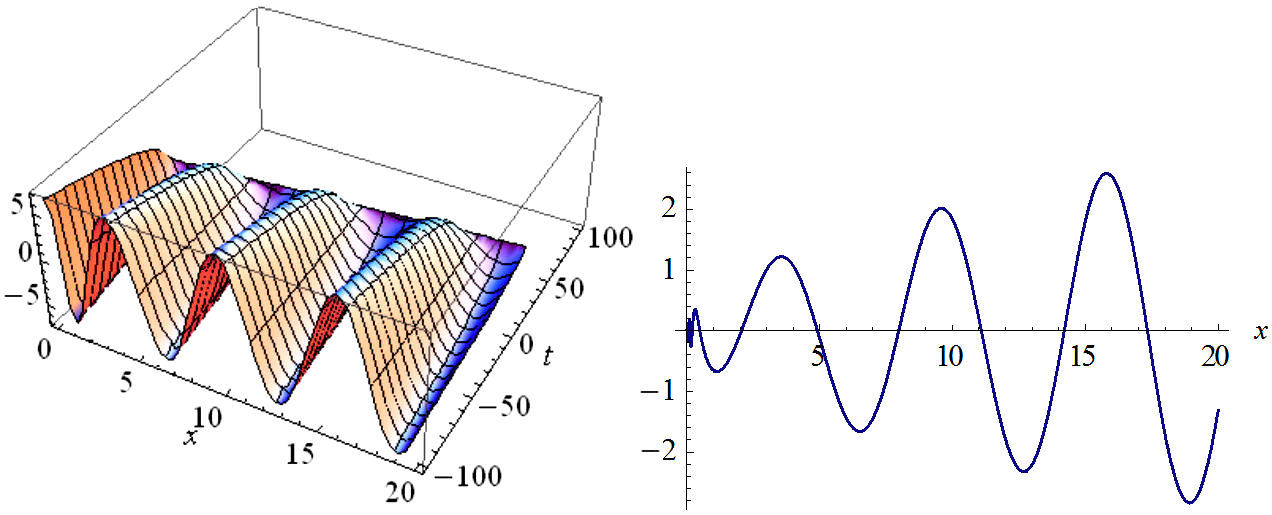
FIGURE 1 The plot of real part Eq. (23) in two and three dimensions with values: n1=4A20, n2=-16A0/3, n3=2, A1=-(i/2)(√3/2), B1=0, b=0.
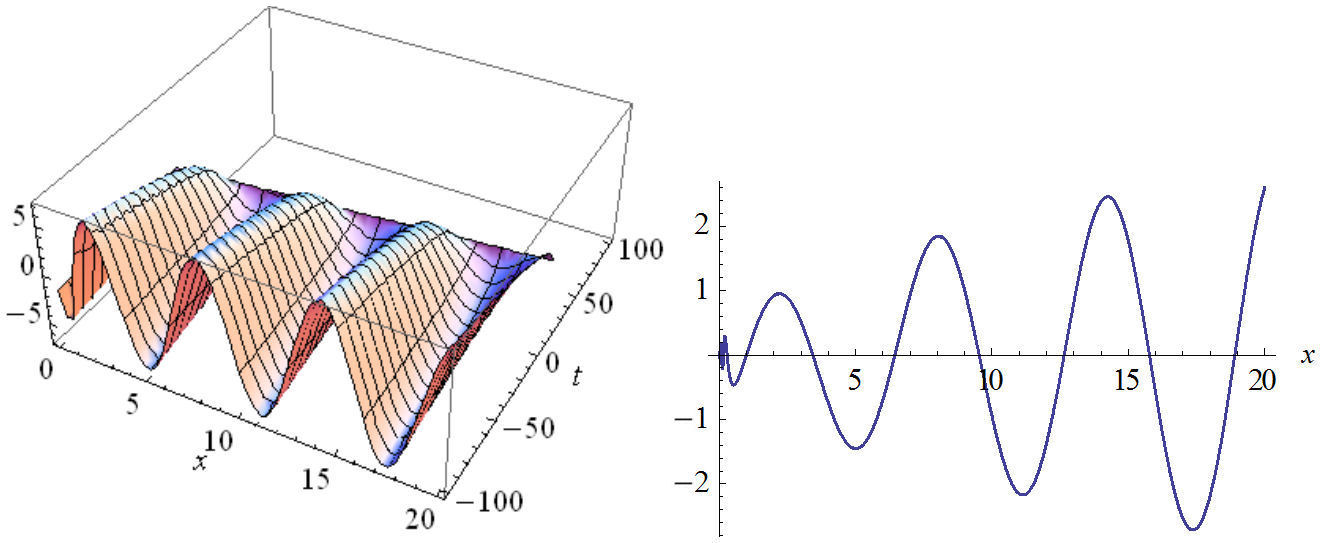
FIGURE 2 The plot of imaginary part Eq. (24) in two and three dimensions with values: n1=4A20, n2=-16A0/3, n3=2, A1=-(i/2)(√3/2), B1=0, b=0.
or
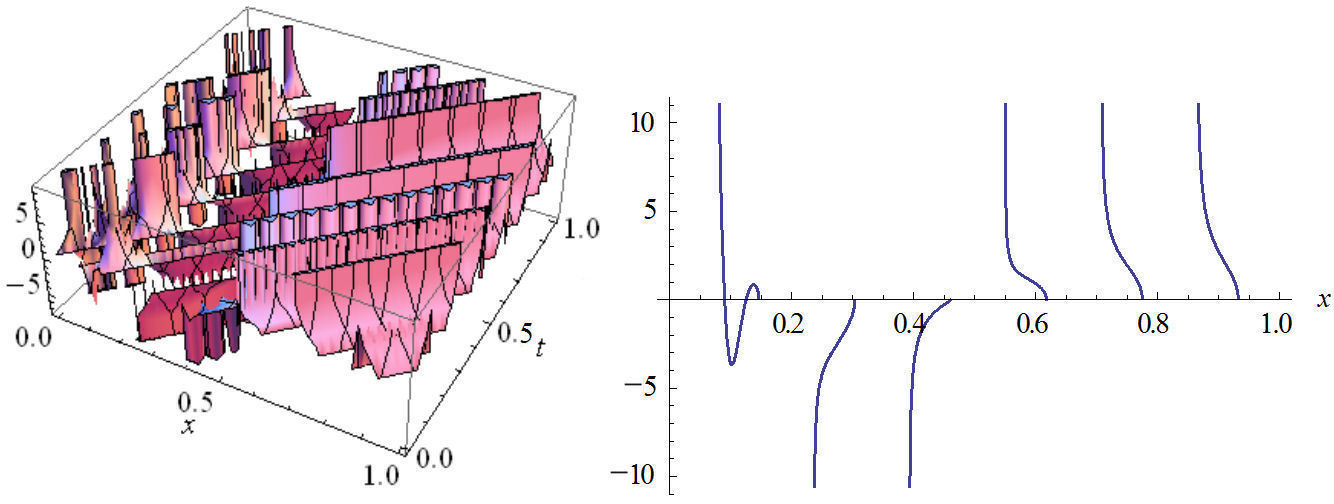
FIGURE 3 The plot of real part Eq. (26) in two and three dimensions with values: n1=-44-8.3i, n2=-9.8i, n3=2, A0=1.8i, A1=0.6i, B1=(6.9-10i), b=11.1-16.6i.
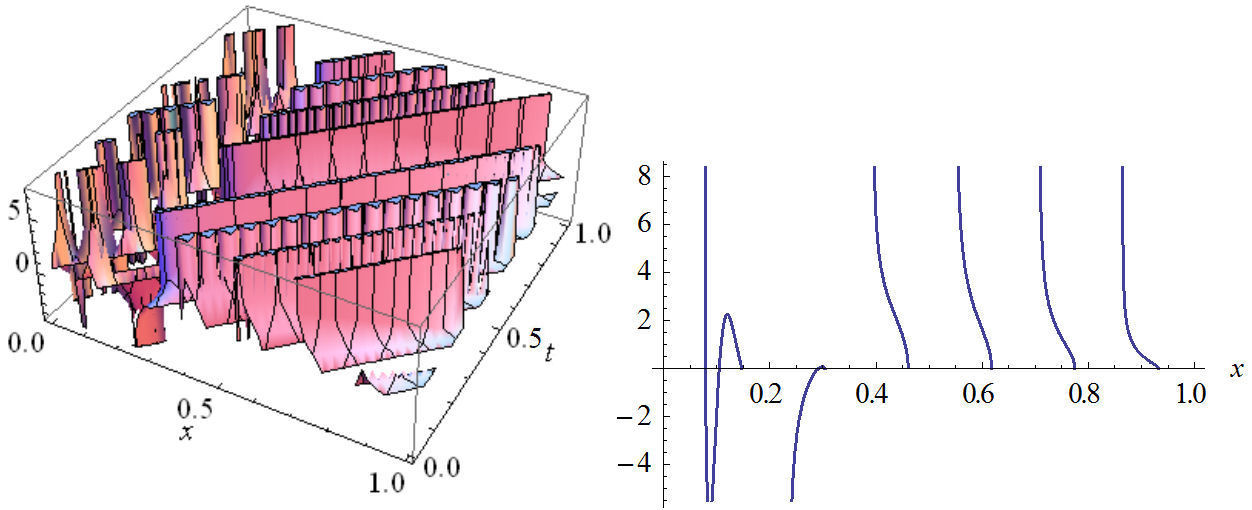
FIGURE 4 The plot of imaginary part Eq. (27) in two and three dimensions with values: n1=-44-8.3i, n2=-9.8i, n3=2, A0=1.8i, A1=0.6i, B1=(6.9-10i), b=11.1-16.6i.
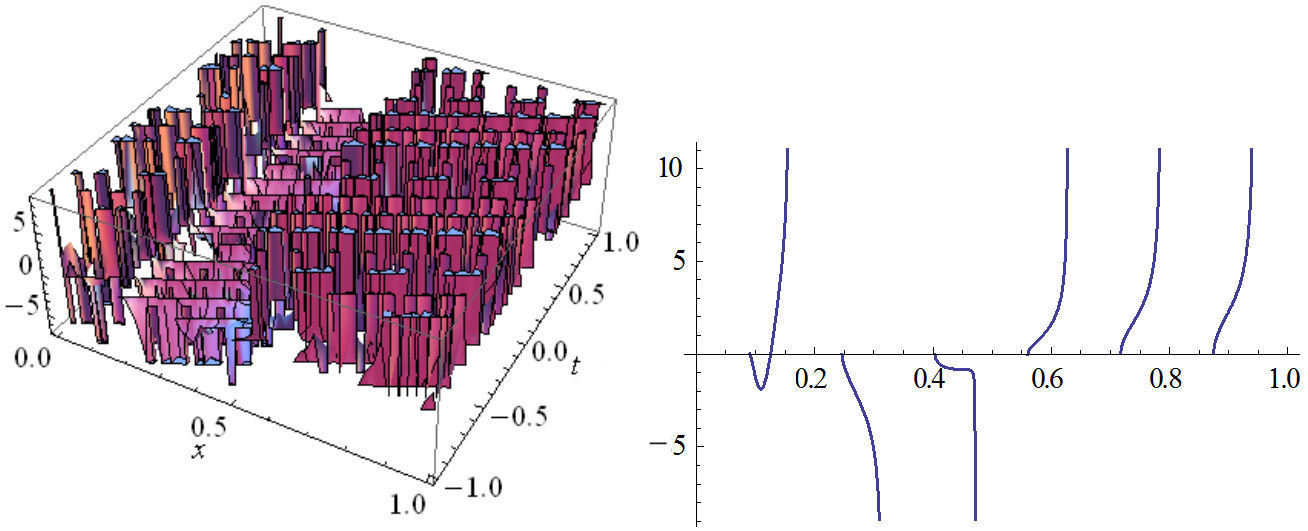
FIGURE 5 The plot of real part Eq. (29) in two and three dimensions with values: n1=-44-8.3i, n2=-9.8i, n3=2, A0=1.8i, A1=0.6i, B1=(6.9-10i), b=11.1-16.6i.
3. The RBSub-ODE method
According to the RBSub-ODE method [29,30] the suggested solution is
where a,b,c, and m are constants to be determined later. It is important to note that when AC≠0 and n=0 (31) is a Riccati equation. When A≠0, c=0, and n≠1, (31) is a Bernoulli equation. By differentiating Eq. (31) once we get
Substituting the derivatives of u into (31) yields an algebraic equation of by consider the symmetry of the right-hand item of (31) and setting equivalence for the highest power exponents of u we can determine m. Comparing the coefficients of ui yields a set of algebraic equations that can be solved for A, B, and C.
According to the obtained values of these constants and using the transformation ζ=x-vt the RBSub-ODE equation admits the following solutions:
where C1 is an arbitrary constant.
Now we will apply the RBSub-ODE method for the equation mentioned above,
that can be rewritten according to the RBSub-ODE method as
Hence,
which we can substitute into Eq. (41) after taking m=1 we get
which can be expressed as
Equating the coefficients of different powers of H to zero, we get a simple system of algebraic equations,
By solving this system of algebraic equations, we get,
According to these obtained solutions and the constructed method we have the following cases:
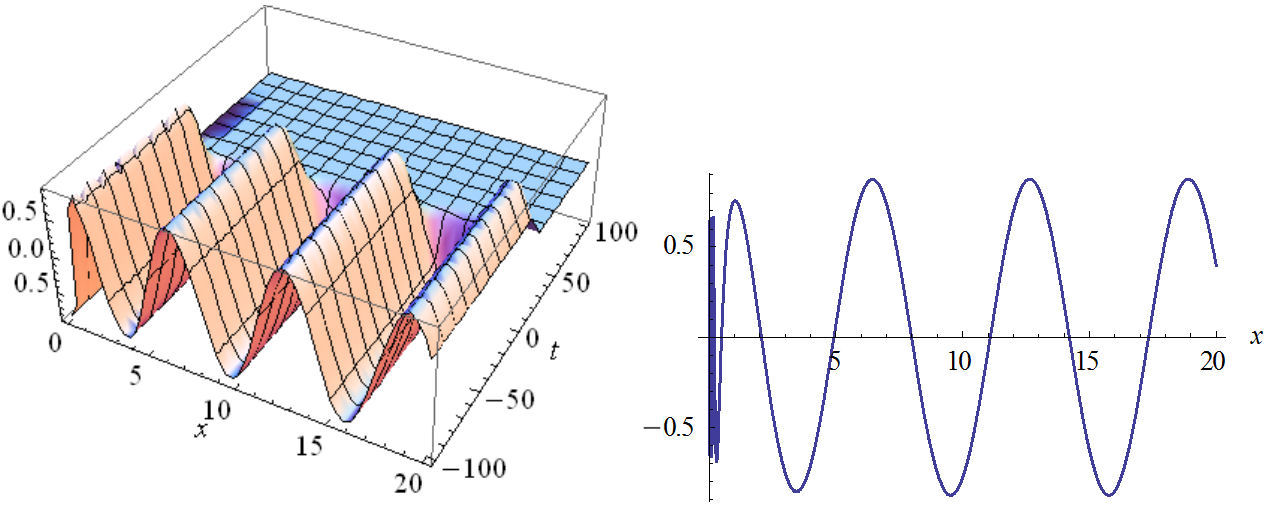
FIGURE 7 The plot of real part Eq. (48) in two and three dimensions with n2=1, n3=-1, B=0.8, C=0, C1=1, w=1, v=1, A=±1.2.
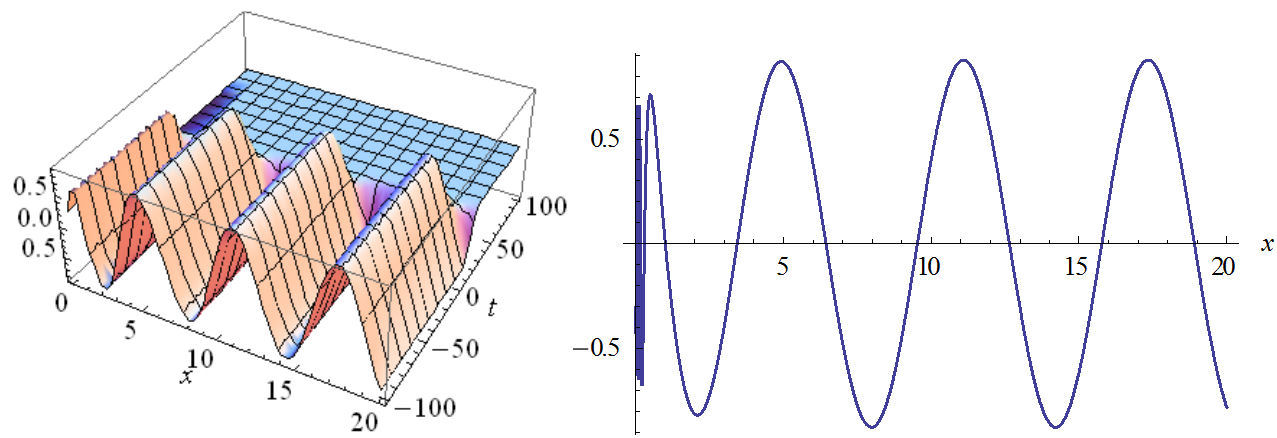
FIGURE 8 The plot of imaginary part Eq. (49) in two and three dimensions with values: n 2 = 1, n 3 = −1, B = 0.8, C = 0, C 1 = 1, w = 1, v = 1, A = ±1.2.
-
(8) When n≠1, A≠0 and B2- 4 AC < 0,
u(ζ)=(4n36n2+√9n22-16n23tan[√3n224n32(ζ+C1)]),and
u(ζ)=(4n36n2+√9n22-16n23cot[√3n224n32(ζ+C1)]),leading to
u(x,t)=(4n36n2+√9n22-16n23tan[√3n224n32(x-vt+C1)]),and
u(x,t)=(4n36n2+√9n22-16n23cot[√3n224n32(x-vt+C1)]).Thus,
w(x,t)=(4n36n2+√9n22-16n23tan[√3n224n32(x-vt+C1)])-(1/2),and
w(x,t)=(4n36n2+√9n22-16n23cot[√3n224n32(x-vt+C1)])-(1/2).Hence,
q4(x,t)=(4n36n2+√9n22-16n23tan[√3n224n32(x-vt+C1)])-(1/2)ei(-kx+wt+θ), (50)Re q4(x,t)=(0.6+0.75tan[0.4{x-vt+C1}])-0.5cos(-kx+wt+1x-vt), (51)Im q4(x,t)=(0.6+0.75tan[0.4{x-vt+C1}])-0.5sin(-kx+wt+1x-vt), (52)
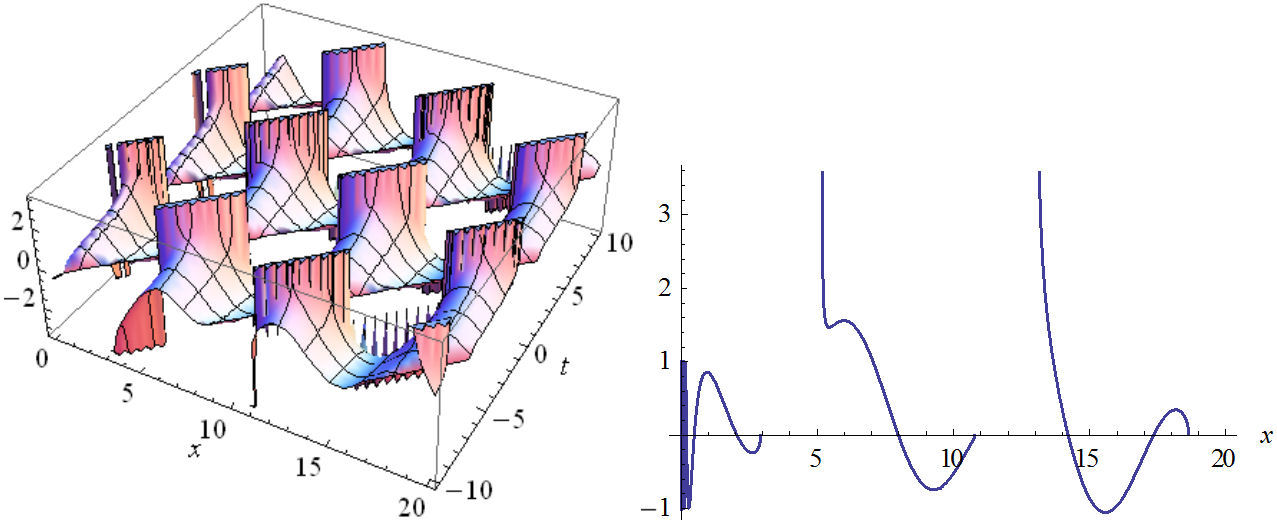
FIGURE 9 The plot of real part Eq. (51) in two and three dimensions with n 2 = 1, n 3 = 1, B = 0.8, C = 0, C 1 = 1, w = 1, v = 1, A = ±1.2.
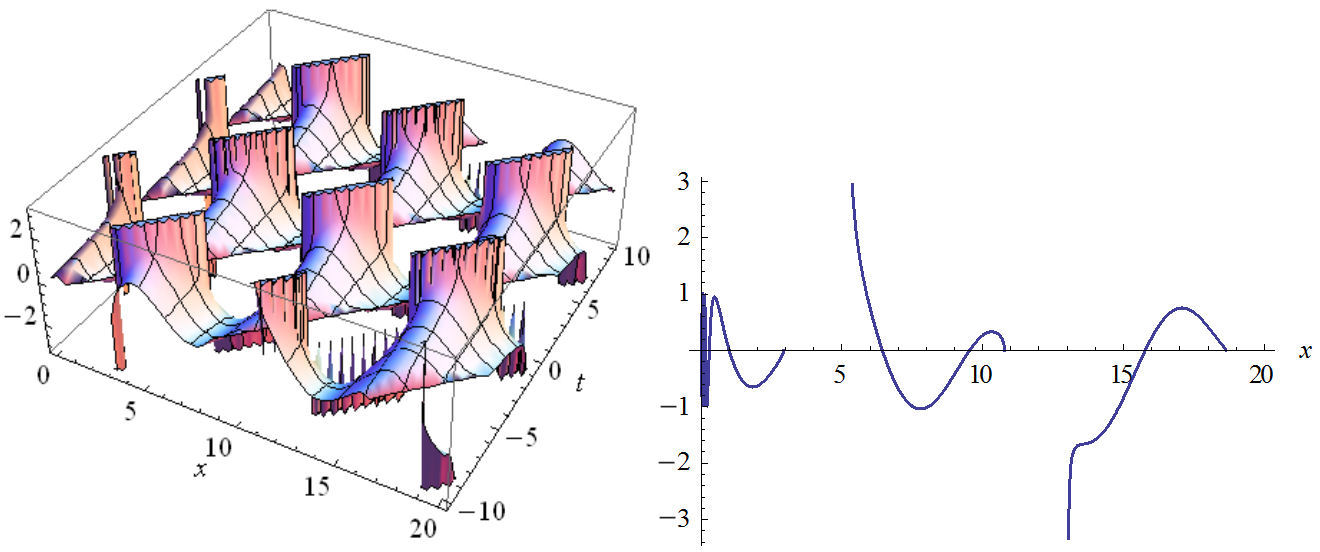
FIGURE 10 The plot of imaginary part Eq. (52) in two and three dimensions with values: n 2 = 1, n 3 = 1, B = 0.8, C = 0, C 1 = 1, w = 1, v = 1, A = ±1.2.
And

FIGURE 11 The plot of real part Eq. (54) in two and three dimensions with n2 = 1, n3 = 1, B = 0.8, C = 0, C1 = 1, w = 1, v = 1, A = ±1.2.
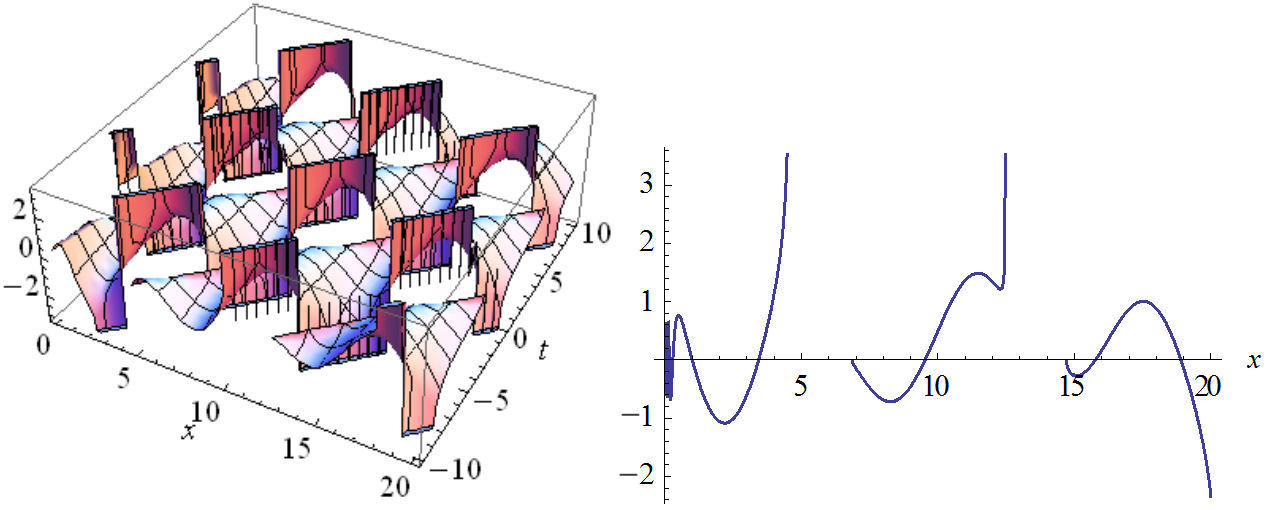
FIGURE 12 The plot of imaginary part Eq. (55) in two and three dimensions with values: n2 = 1, n3 = 1, B = 0.8, C = 0, C1 = 1, w = 1, v = 1, A = ±1.2.
and
leading to
Thus
and
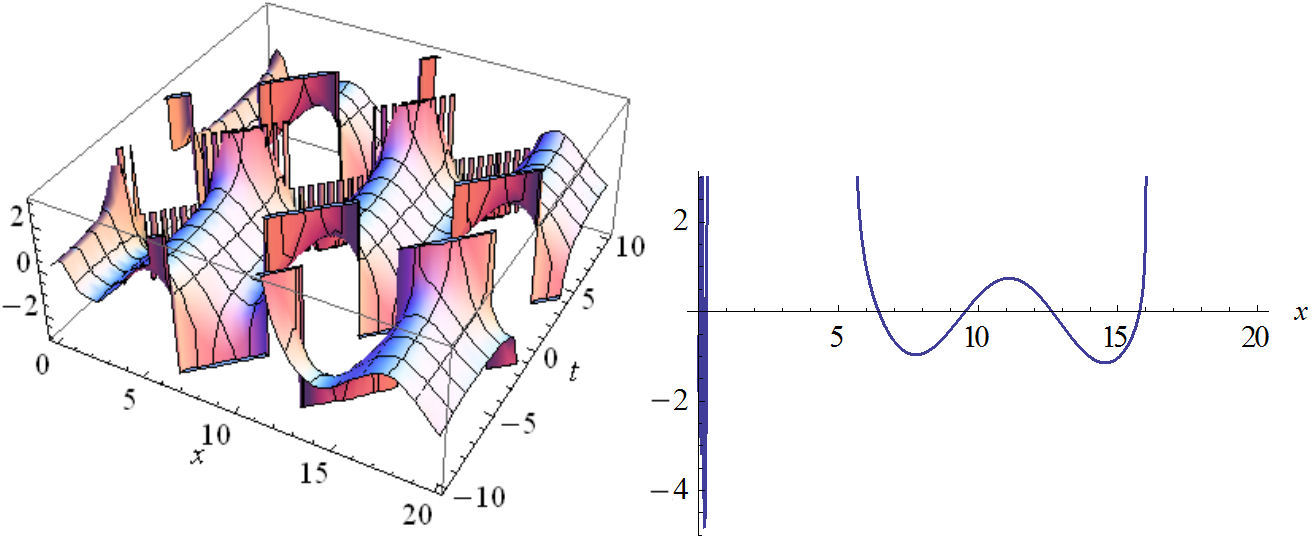
FIGURE 13 The plot of real part Eq. (57) in two and three dimensions with n2 = 1, n3 = 1, B = 0.8, C = 0, C1 = 1, w = 1, v = 1, A = ±1.2.
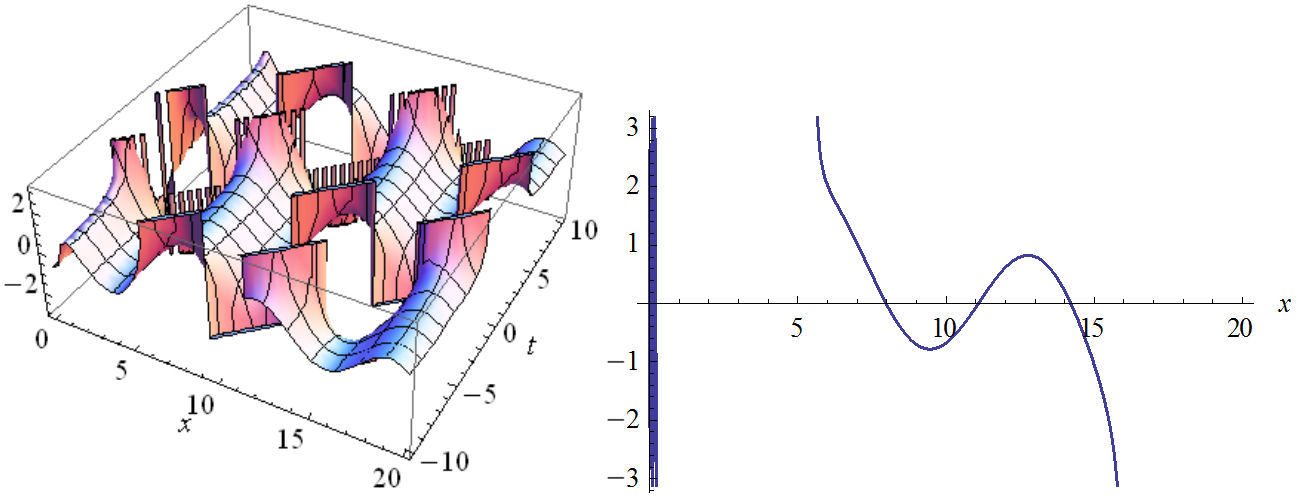
FIGURE 14 The plot of imaginary part Eq. (58) in two and three dimensions with values: n2 = 1, n3 = 1, B = 0.8, C = 0, C1 = 1, w = 1, v = 1, A = ±1.2.
Hence,
By the same manner we can easily plot the last equation,
4. Conclusion
In this work, using the solution of the auxiliary (4) in the framework of the METF method, we have obtained the exact solutions for the perturbed GI equation. A new technique, following the RBSub-ODE method, reduces the number of calculations in a significant manner while the treatment of the failure of the balance rule is successfully used to get new optical solitons of the perturbed GI equation. We also conclude that these techniques are effective and convenient methods and can be applied to other NLPDEs.











 nueva página del texto (beta)
nueva página del texto (beta)



